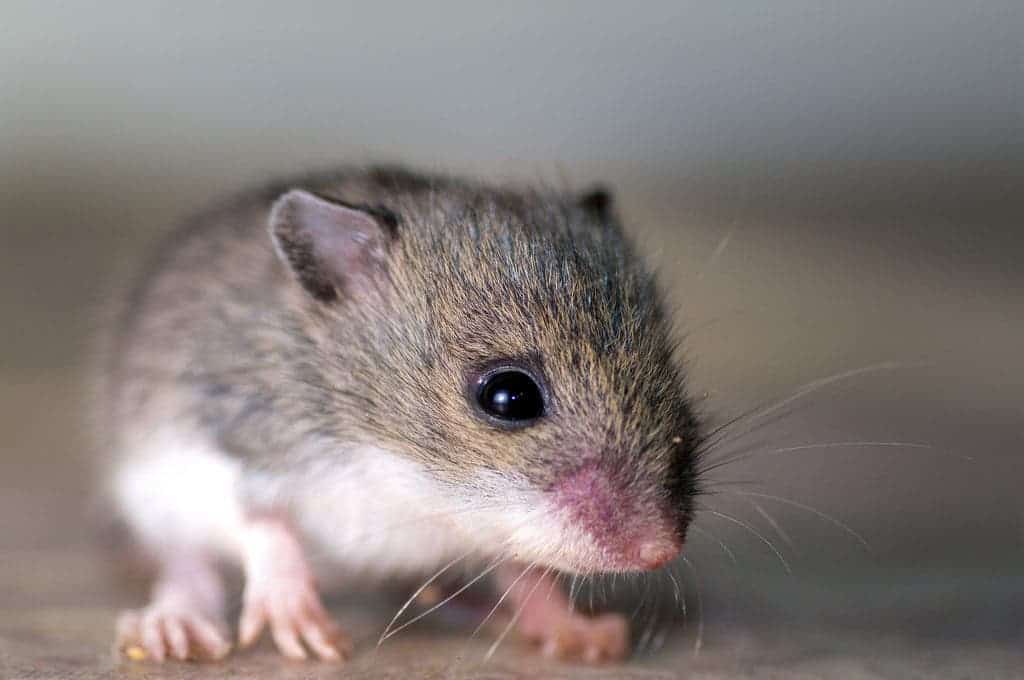A new intriguing study found that even before the first humans settled to become agricultors, mice were already following human tribes.
Mouse in the house

In most climates, mice are ubiquitous. You might not see them, but wherever there’s a city, town, or village, there’s also mice. Loved by some and hated by most, mice have been associated with mankind since its dawn, taking advantage of the way people are shaping the environment to suit their needs — and using that to their own advantage. Now, new research reveals that even before agriculture became a thing, mice and humans were already living side by side, and mice weren’t pests.
It all happened some 15,000 years ago, in the Levant region just east of the Mediterranean (crop agriculture developed 12,000 years ago) — but the common house mouse had to fend off another species to take over.
“The research provides the first evidence that, as early as 15,000 years ago, humans were living in one place long enough to impact local animal communities — resulting in the dominant presence of house mice,” said Fiona Marshall, study co-author and a professor of anthropology at Washington University in St. Louis. “It’s clear that the permanent occupation of these settlements had far-reaching consequences for local ecologies, animal domestication and human societies.”
Back then, the Natufian people were already sedentary or semi-sedentary, even though they weren’t growing crops, and mice took their moment. The species the common mouse (Mus musculus domesticus) had to outcompete is the short-tailed Mus macedonicus, the Macedonian Mouse which still lives in the area from eastern Georgia and western Bulgaria to Israel. When the Natufians started building their permanent settlements, the two species engaged in a battle for resources that lasted centuries. Keep in mind that this was way before dogs or cats entered the scene, and the mice had a lot of readily available food and few predators.
However, this doesn’t mean that the mice were truly domestic, but neither were they pests.
“I would refer to the ancient house mice that we studied from the Levant—those that initially became associated with pre-farming, sedentary hunter-gatherers (the Natufian culture)—as ‘commensal’ rather than ‘domesticated,’” explained study co-author Lior Weissbrod in an interview with Gizmodo. “This means that the interaction was one-sided: mice were benefitting, but humans were neutral—neither benefitting nor being harmed.” It wouldn’t be until the advent of agriculture that the house mouse transformed into a full-on pest. Revealingly, the non-agricultural Maasai villagers look at their cohabitating mice with indifference.
Modern technology, ancient mice
Researchers reached this conclusion by analyzing the shapes and number of fossilized mouse molars dating back as far as 200,000 years, showing that their population fluctuated based on how humans moved their settlements. Furthermore, human mobility influenced the competitive relationship between the house and Macedonian mice. Basically, whenever humans thrived and stayed in one place for a longer time, the common mouse would take over. In periods of crisis (drought, famine) or whenever humans moved more often, the Macedonian mouse would bounce back. Ultimately, as humans became more successful, so too did the common mouse.

“The competition between commensal house mice and other wild mice continued to fluctuate as humans became more mobile in arid periods and more sedentary at other times — indicating the sensitivity of local environments to degrees of human mobility and the complexity of human environmental relationships going back in the Pleistocene,” said Lior Weissbrod, currently a research fellow at the Zinman Institute of Archaeology at the University of Haifa.
He and his colleagues developed a new technique called geometric morphometrics to identify the mouse fossils and reliably distinguish telltale differences in the minuscule remains of house mice and wild species. Basically, they used high-resolution imaging as well as digital analysis and used subtle variations in molars (down to 1 mm) to differentiate between the species.
They also conducted several studies to “living model” villages of the Massai people, in southern Kenya and Tanzania, seminomadic people who have some things in common with the Natufians, to get a feel of how society might have looked like for the mice back then.
The significant of this study is twofold. First of all, it highlights how mouse populations evolved and settled to be a permanent companion to human settlements.
Secondly, it also means that mouse populations can be used as a proxy to track shifts in human mobility and lifestyle. Basically, we have a good idea of how the Natufians moved around, and researchers used that to track changes in mouse population. Then, after the relation is established, we can use changes in mouse population to track the shifts in human shifts, where there isn’t much other information available. Researchers conclude:
“These findings suggest that hunter-gatherers of the Natufian culture, rather than later Neolithic farmers, were the first to adopt a sedentary way of life and unintentionally initiated a new type of ecological interaction — close coexistence with commensal species such as the house mouse,” Weissbrod said. “The human dynamic of shifts between mobile and sedentary existence was unraveled in unprecedented detail in the record of fluctuations in proportions of the two species through time.”
Journal Reference: Lior Weissbrod, Fiona B. Marshall, François R. Valla, Hamoudi Khalaily, Guy Bar-Oz, Jean-Christophe Auffray, Jean-Denis Vigne, and Thomas Cucchi. Origins of house mice in ecological niches created by settled hunter-gatherers in the Levant 15,000 y ago. Proceedings of the National Academy of Sciences, March 2017 DOI: 10.1073/pnas.1619137114


